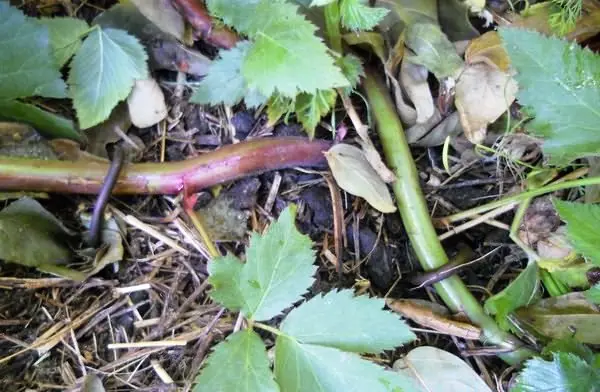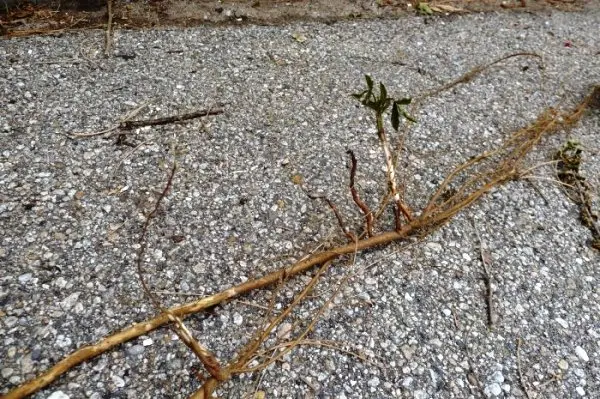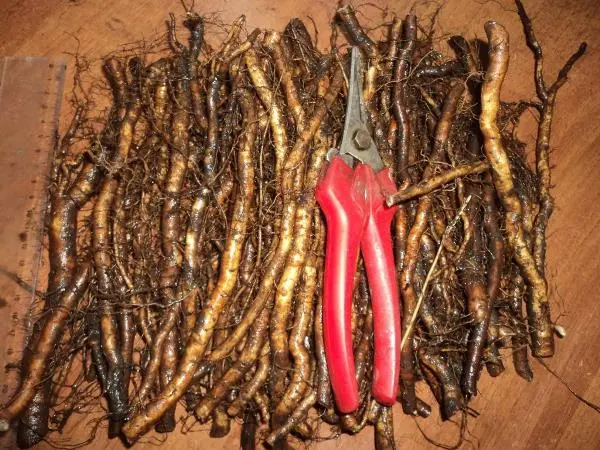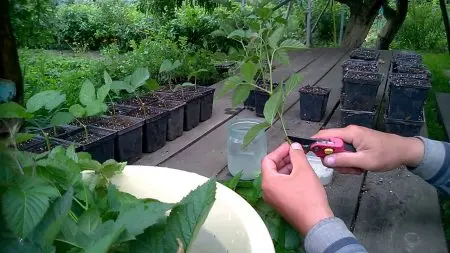Contents
Garden blackberries are increasingly settling on our plots. A tasty healthy berry requires quite feasible, even for beginner gardeners, care, especially since breeders are trying to create more and more undemanding varieties in care, depriving them of thorns and thorns. Even one bush in the yard attracts everyone’s attention, it is so decorative, and some manage to make a hedge out of this culture. Only here is the trouble – the seedlings are still not cheap, but you want to breed it at home, so many are interested in the question of how to propagate blackberries.
Propagation of garden blackberries by layering
Propagation of blackberries is not difficult if you know the basic methods corresponding to each type of crop. Shoots of upright varieties (kumaniki) are often difficult to bend to the ground. Probably this explains the very rare attempts to propagate them by apical layering, but they usually give a lot of root offspring. But creeping varieties (dew plants) can be easily bred if at least one bush grows on the site, namely by layering.

Kumaniki and dewberries practically do not differ in care. True, they are tied up in different ways. Yes, brambles are not sheltered everywhere for the winter, but the long branches of dewberry, which grow several meters in the first year after planting, practically do not become lignified.
With one blackberry bush, you can grow about 20 seedlings by layering in one season. This is best done in the summer, at the beginning of August, when the heat subsides. You need to take a young shoot, cut off its top (approximately 10 cm), put it in a prepared hole or trench up to 25 cm deep and sprinkle it with earth. The branch can be pinned to the ground with a wire or pressed down with something on top of the ground so that it does not rise from the hole, and the end, trimmed to stop its growth, can be left outside. The dug hole is plentifully watered and mulched.
Further care for the buried shoot consists in frequent watering, destruction of weeds. After 2 months, already in autumn, new leaves of rooted shoots should appear on the surface of the earth. The earth must be carefully excavated, carefully cut with a pruner between the roots that have appeared – these are the new seedlings and are ready for planting. They can immediately be transferred to a permanent place, or you can postpone planting until spring – it depends on the speed of the arrival of frost.

And it is possible even later in the fall to dig the top of a young shoot, cutting off the apical buds, organize the same care, and plant new plants in a permanent place in the spring, after the earth has melted – when blackberries are usually planted on the site. To speed up the process, a branch is slightly cut or scratched under each kidney. When the blackberry is propagated in this way, by layering, the branch is added dropwise without cutting off from the mother bush.
Reproduction offspring
Propagation of upright blackberries usually occurs with the help of offspring. When the rhizome grows, new young shoots appear on it, which are usually removed annually so that the bush does not grow uncontrollably. A healthy adult bush older than three years gives 15–17 offspring, among them the strongest and strongest ones are chosen, which will become independent plants after planting and appropriate care.

At the very beginning of summer, strong offspring are selected that have reached 10 cm in height, they are separated along with the root from the mother plant, preferably with a clod of earth, and transplanted to a permanent place. Planting and subsequent care are carried out in the traditional way for blackberries. Plant preferably in prepared fertilized soil, then water well, mulch around the ground. Some gardeners leave the selected offspring, do not separate them from the mother bush until the end of summer, and transplant them in the fall, like a new seedling. In this case, the shoot is shortened to 30-40 cm. If you choose good strong shoots, provide them with caring care, then next year real young bushes will grow from them, and most importantly, they will retain all the qualities of their variety.
This is a very simple and convenient way of reproduction. The only pity is that it is not suitable for all varieties.
In hybrids and some new varieties of large-fruited and thornless blackberries, offspring are not formed. This, of course, makes it much easier to care for the bushes, but it does not make it possible to breed them in this way.

Cuttings in greenhouses and on window sills
But cuttings at home can be propagated by almost any variety. True, thornless varieties often grow spines. Even such a new variety as “Prime Ark Freedom”, which is currently undergoing variety trials, is perfectly propagated by cuttings or root shoots. In the US state of California, “Prime Ark Freedom” produces two crops, which means that in our country it may well bear fruit in protected ground conditions.
In autumn, cuttings are harvested by cutting them from annual shoots. Each cutting should be about 15 cm tall and have 2-3 buds. Then they take each of them, cut off the leaves, lower them into the water with the apical bud (just the top one on this handle), that is, upside down. In a jar of water (which is constantly topped up), the stalk stands until a small independent plant with its roots and shoots develops from the bud. This tiny seedling is separated with a piece of stem and planted in a dish with light seedling nutrient soil. There it will grow and grow stronger until spring at home or greenhouse. And after cutting it, the next kidney falls under the water, the process repeats. This is a very productive method, since each bud produces a full-fledged blackberry bush with the characteristics of its variety.

There is another way to root cuttings. They take the same stalk that has not yet become lignified, cut off the stem at an angle of 45 degrees from the side opposite to the bud, cut it also over the next leaf, remove one of the parts of the three-part leaf, dip the stalk with the bud into Kornevin or a similar preparation, plant it in peat for rooting. Such small cuttings with one bud and one incomplete leaf take root perfectly, give rise to a new plant. They are provided with care at home until spring, and then planted in a permanent place of growth.

Garden blackberries root easily. You can make it even easier – lower the lower part of the cutting into water, bend it, lower the upper part into wet soil, or simply wrap it with polyethylene to retain moisture. After a while, the root will begin to grow not under water, but on the other side.
Blackberries are never planted from seed, although they germinate well and can grow into strong, good plants. But this is how specialists work, not gardeners.
When growing a bush from seeds, you never know what will happen – a new plant does not retain the characteristics of the variety of the plant from which the seeds were collected. It is much easier to plant blackberries on your site with offspring, layering or cuttings.
Video “The easiest way to propagate blackberries”
In this video you will get acquainted with a simple way to propagate blackberries, which gives 100% survival rate.









